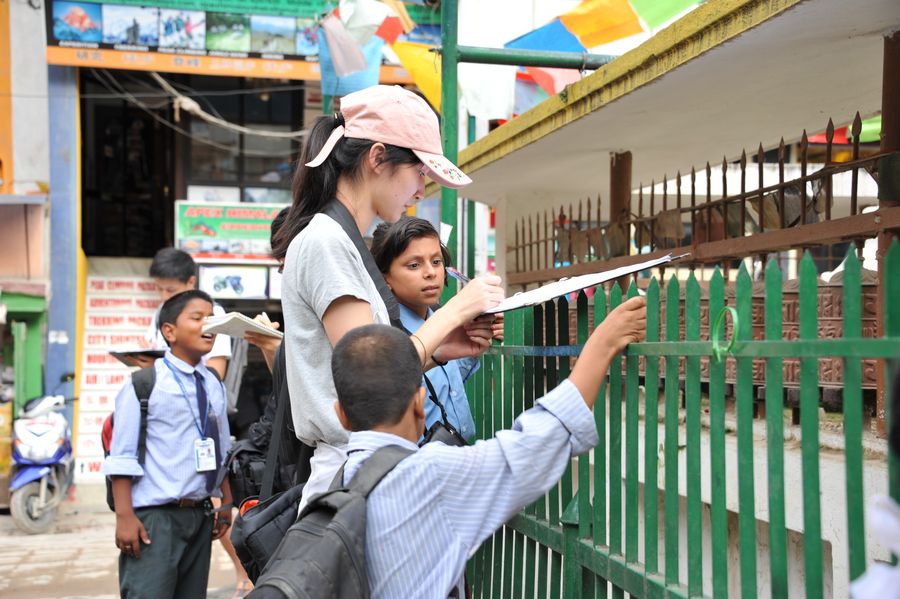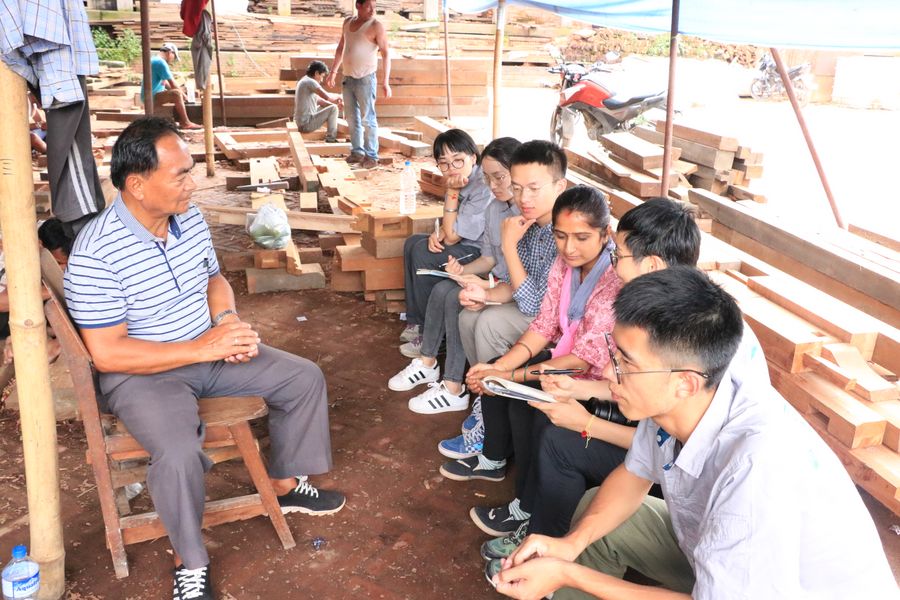
Teachers and students from China and Nepal pose for a group photo after completing the mapping of Panauti in Nepal in this photo dated Aug. 27, 2019. (Provided by Southeast University)
A Chinese lecturer and around 60 undergraduates have helped restoration efforts in Nepal by mapping two UNESCO World Heritage Sites.
NANJING, Oct. 15 (Xinhua) -- Over the past three years, Ren Sijie has taken Chinese undergraduates to Nepal to assist restoration projects at world heritage sites in Bhaktapur Municipality in the Kathmandu Valley.
Ren first came to Nepal in August 2017, two years after a 8.1-magnitude earthquake had struck the country.
The earthquake killed people, razed property and seriously damaged ancient buildings, Ren said.
More than 60 Hindu temples collapsed and over 200 monuments sustained damage, according to the Department of Archaeology under the Nepal Ministry of Culture, Tourism and Civil Aviation. Many of the ancient buildings in the Kathmandu Valley were also destroyed, including 12 UNESCO World Heritage Sites.

A student from Southeast University, Nanjing, works while inquisitive school kids look on in Nepal on Aug. 28, 2017. (Provided by Southeast University)
Ren is a lecturer at Nanjing's Southeast University, which launched a project in 2017 to help revive damaged heritage sites in Nepal.
It is not just about completing an assignment or a graduation project, but it is also a social exercise allowing students to use their professional knowledge to give back to society, said Sun Yingzhe, a teaching assistant at the university.
Plans and drafts are essential to any reconstruction or restoration work. Ren and a total of three batches of about 60 undergraduates have completed the mappings of two UNESCO World Heritage Sites in Nepal, including the Changu Narayan Temple complex.
Digital tools, such as three-dimensional laser scanning and aerial photography, have really aided our work, Ren said.
According to the lecturer, the local archaeology department has provided great support.
Sunil Prajapati, mayor of Bhaktapur Municipality, has encouraged us to extend our efforts to other aspects, such as the protection of some intangible cultural heritage in the country, she added.
Over the past three years, students have also designed dozens of bilingual travel brochures. As more Chinese tourists are coming to Nepal, we hope that its architecture will not only become popular destinations but can also be recognized for their cultural charms, Sun Yingzhe said.

Students from Southeast University, Nanjing, visit a timber workshop in Bhaktapur, Nepal, on Aug. 29, 2018. (Provided by Southeast University)
Cao Yiming, a first-year graduate student at Southeast University, visited Bhaktapur in April. Within three weeks, she had been to religious sites all over the city.
I found that the Western heritage protection approach was not really suitable for Nepal as many temples here are still in use, she said.
According to Ren, living heritage is one of the unique values of Nepal's architecture, and they wanted to help the country strike a balance between development and protection.
Asian cities tend to be densely populated. Also, economic development brings new challenges to preservation work, she said.
Last year, Southeast University was selected as the network secretariat for the Asian Academy for Heritage Management. The academy was established by UNESCO and the International Centre for the Study of the Preservation and Restoration of Cultural Property to improve heritage management education across the Asia-Pacific region.
We hope that China and Nepal can establish more cooperation mechanisms in archaeology, architecture and other fields, train more professionals in the area of cultural relics protection for Nepal, and contribute to the protection of world heritage, Ren said. ■




